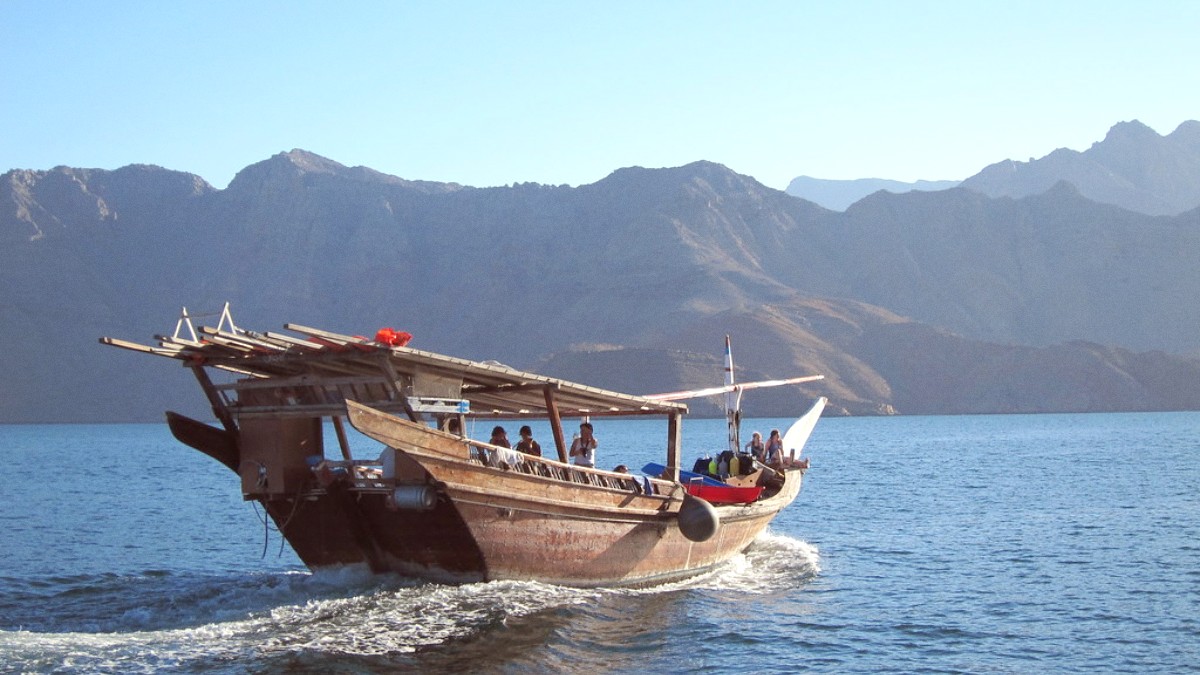
Oman
Khasab Fort, a restored 17th-century Portuguese fort, serves as a museum detailing Musandam's history, local crafts, and ancient artifacts. You can explore rooms, courtyards, and watchtowers.
Jebel Harim, the highest peak in Musandam, offers breathtaking panoramic views. Its name, "Mountain of Women," stems from a time when women retreated to its heights to avoid pirate attacks. The ascent requires a 4x4 vehicle.
Take a dhow cruise early in the morning for the calmest waters and often the best chances to spot dolphins. Bring your camera and sun protection.
Ancient petroglyphs near Khasab (4x4 needed). Depict human figures, animals, and hunting scenes. A local guide can assist.
Small, traditional market offering a glimpse into local commerce and architecture. Find fresh produce, dates, spices, and textiles. Bargaining is common.
Mosques are present but generally not open to non-Muslim visitors. Admire from exterior and keep respectful distance.
No major memorial sites or tourist-accessible military heritage. Focus on natural and cultural sites instead.
If ancient history sparks your interest, arrange a 4x4 tour to the Wadi Tawi rock carvings. They connect you to Musandam's earliest human presence.
Musandam's main allure rests in its spectacular natural landscapes, dominated by mountains and fjords.
Scenic drive to a stunning panoramic viewpoint overlooking one of Musandam's most picturesque fjords.
Summit and various points along the road offer expansive, unparalleled views of the intricate coastline.
Beautiful inlet, often visited during dhow cruises for swimming and snorkeling. Calm, clear waters and surrounding cliffs.
Small, rocky island in Khor Sham, a famous snorkeling spot. Site of a British telegraph repeater station from the 1860s.
Popular wildlife encounter. Large pods of dolphins frequently accompany dhows in Khor Sham. Their playful antics are a trip highlight.
Clear waters support diverse marine life. Snorkeling and diving reveal colorful coral reefs, fish, sea turtles, and sometimes rays.
"Fjords" (Khawrs): These submerged river valleys create an intricate coastline of deep inlets, dramatic cliffs, and secluded coves.
The towering limestone cliffs that define the fjords are impressive, showing millions of years of geological activity.
On the ascent to Jebel Harim, specific rock formations contain ancient marine fossils, tangible evidence of the region's past submersion.
Many small, pristine beaches are tucked away in the coves and inlets of the fjords, accessible only by dhow. These offer serene spots for swimming and relaxation.
Beyond the well-known attractions, Musandam offers quieter spots and local favorites for those who seek exploration.
These sites offer a quiet, contemplative experience of ancient human history and unique cultural immersion.
Explore parts of local life rarely seen by most tourists.
Capture the stunning beauty of Musandam with these unique shots.
For optimal lighting and fewer crowds.
Musandam offers an unique blend of historical sites and breathtaking natural wonders.
Plan your itinerary to balance exploration with relaxation for a memorable visit.
Delving into Musandam's less-explored corners for unique discoveries.
Discover unique archaeological sites and cultural enclaves beyond the usual tourist circuit.
Experience authentic local life and see how tourism development is carefully managed.
Capture Musandam's dramatic scenery with these stunning shots.
Consider a wide-angle lens for sweeping landscapes and a zoom lens for distant details.
Capture dynamic moments and cultural elements.
A waterproof phone pouch or action camera is useful for capturing swimming and snorkeling moments.
Embrace the quiet evenings and local guidance for extraordinary photos.
Respect local customs and privacy when photographing people or residential areas.
Practice "leave no trace" principles by taking all your rubbish with you and respecting the natural environment, especially in wild camping areas.
Dress modestly, especially when visiting local towns or religious sites. Be mindful of local customs and traditions in your interactions and photography.
Inform someone of your plans when going on treks or off-road excursions. Carry ample water and supplies, and consider guided tours for challenging terrain.